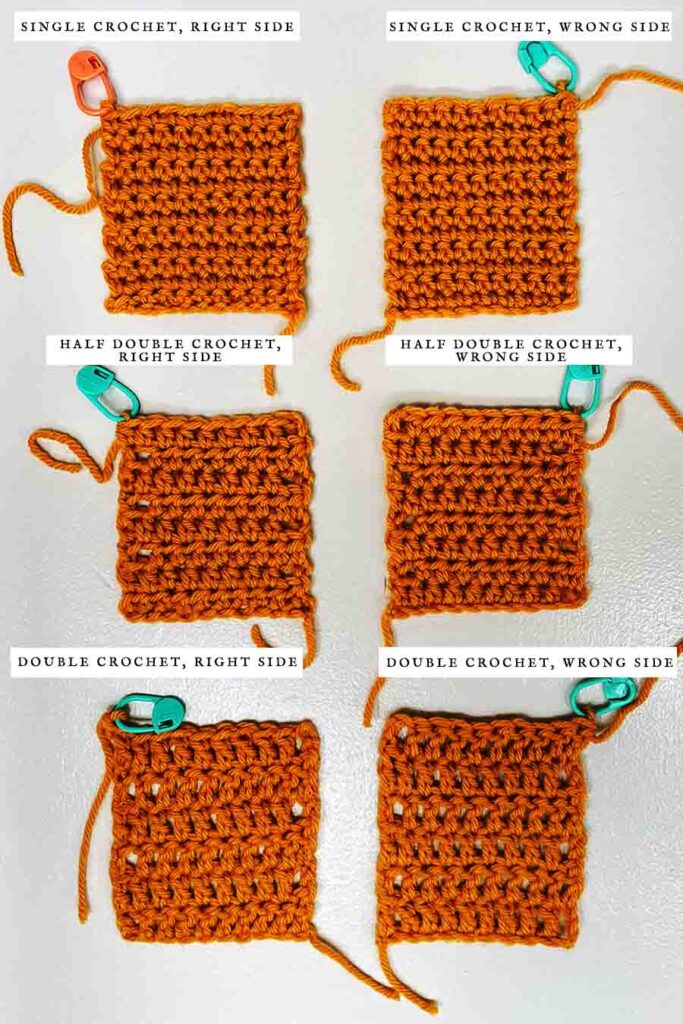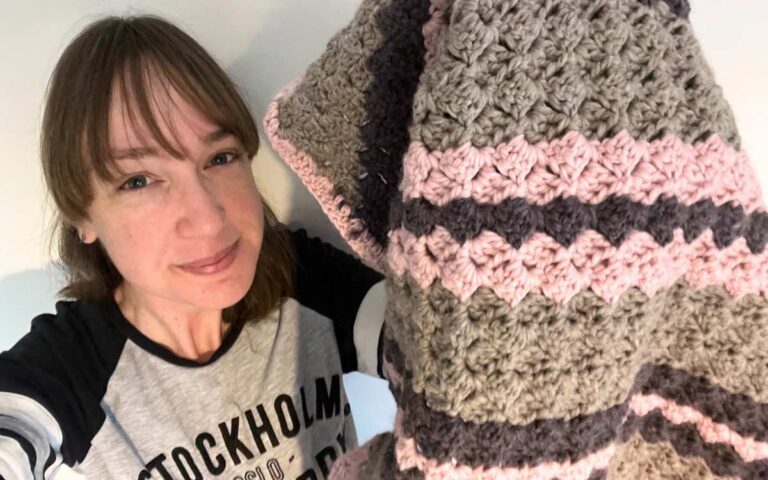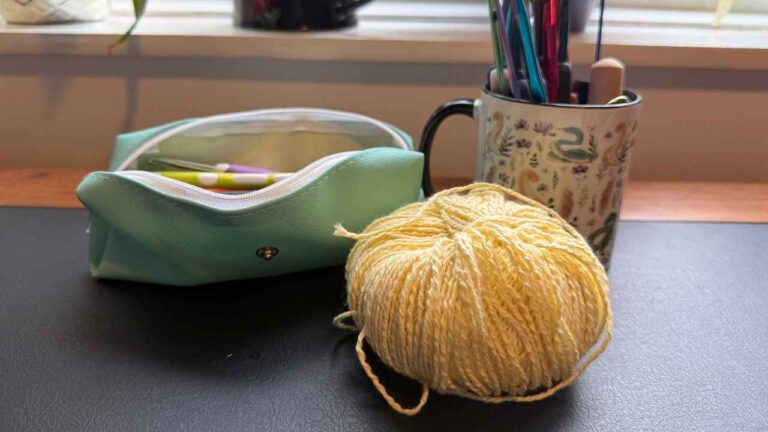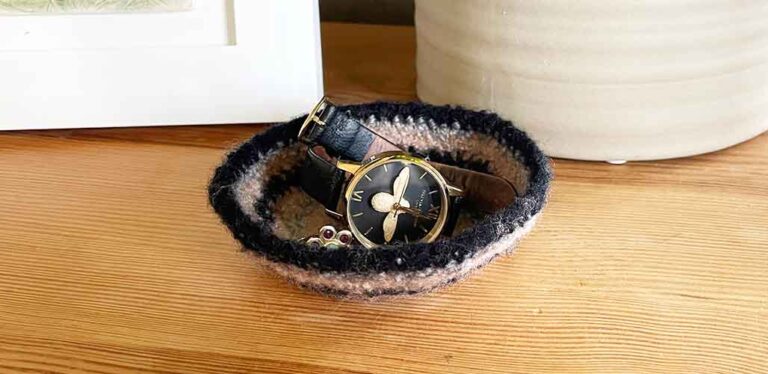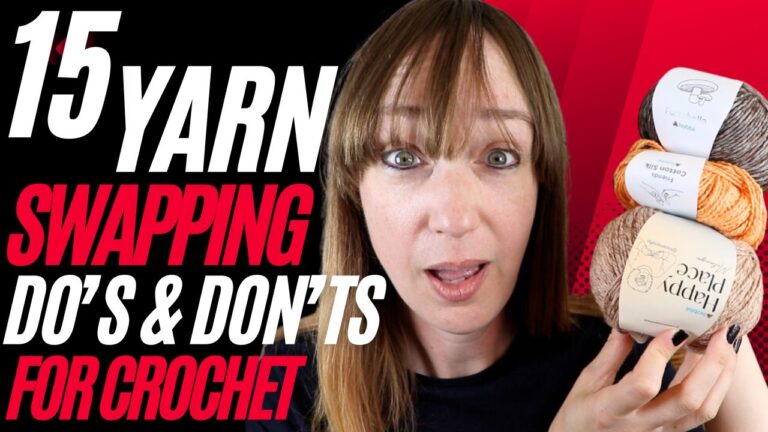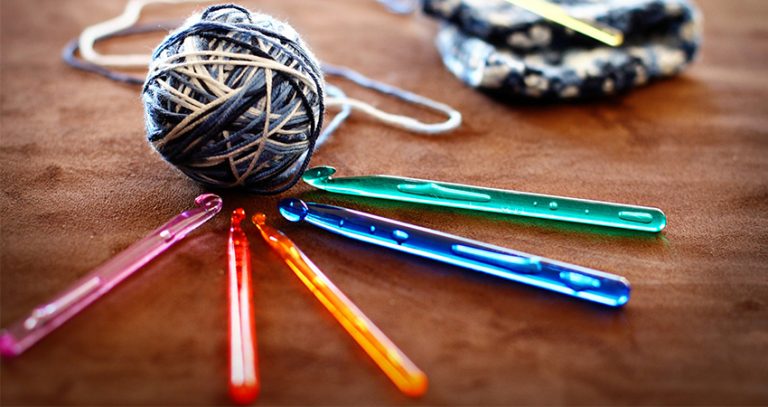Right Side Vs Wrong Side Crochet – How To Tell Them Apart
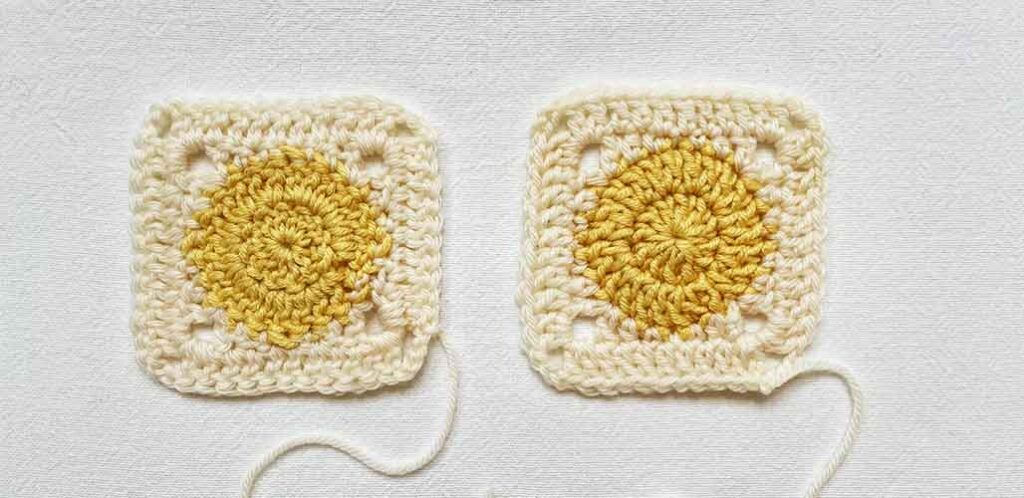
Right side vs wrong side crochet doesn’t mean one is bad and the other is good. I’m pleased to let you know that it’s not a moral or ethical distinction, it just tells you which way up the crocheted material was when it was made! Sometimes that doesn’t matter at all, but on other occasions, I have found that knowing the difference and having the correct side facing you as you start the next row is critical to the success of my project.
I’ve worked up some examples to show you the difference between the right side and the wrong side of crochet. I’ll also share my experiences of how to tell when it matters, and when it doesn’t.
- What are the right side and wrong side of crochet?
- Why does it matter?
- How to tell right side vs wrong side crochet apart
What are the right side and wrong side of crochet?
Basically, the wrong side of crochets is the back of your work. And the right side is the front, or the side that everyone will see. If you’re making a sweater for example, the wrong side will end up on the inside facing your body, and the right side will be on the outside. For lots of simple, flat stitches, the difference between the right and wrong side is very subtle. The right side is the side on which the stitches look a bit more defined and attractive. When you’re working with 3D stitches like puffs, shells and waves, the right side is also the side on which the stitch clusters look correct. Which usually means being raised, rather than sunken.
Why does it matter?
Sometimes, it doesn’t! Although how much it doesn’t matter can itself be a matter of opinion. We have a couple of simple granny square blankets at home that I made in plain old double crochet. My husband either can’t tell the difference between the two sides, or finds them both equally attractive, because he spreads them out the wrong way up all. the. time. But I can totally see a difference, because I turn them back over whenever I realize he’s done it!
So for some items, like blankets or scarves, it’s fairly easy to make a case that the difference between right side vs wrong side crochet doesn’t matter. This is particularly true when crochet is worked in back-and-forth rows rather than in the round. When you crochet back and forth, each row ‘faces’ the opposite direction to its neighbors. In other words, it is half made of front-facing rows and half made of back-facing rows anyway. However, there are some times when you do need to tell the front and the back of your work apart. Good examples of this are:
- Keeping track in more complex projects
- Assembling garments
- Stitch patterns that are worked over more than one row
- Working with texture
Keeping track in more complex projects
In some crochet patterns you’ll see the terms ‘wrong side facing’ or ‘right side facing’. These terms can be abbreviated to ‘WS facing’ and ‘RS facing’. For example in a pattern for a piece of clothing you might see:
Sc next 20 (24, 32, 40) rows, ws facing.
This is basically a reminder of which way round your work should be at the end of the next stage of your pattern. The numbers in brackets represent how many rows to work to make the garment in different sizes. But whichever size you’re working on, when you finish that section and turn your work to start the next row, you should be looking at the wrong side of your work. If you count 20 (24, 32, 40) rows and you’re looking at the right side of your work as you start the next row, then count again!
Assembling garments
This is probably the classic example of when getting your crochet the right way round matters. Clothes are assembled so that the wrong side of your work faces your body, and the best side faces outwards. Since lots of sections are usually symmetrical, there’s nothing that would actually stop you from sewing them together the wrong way round. But, if you assemble a sweater with some panels facing inwards, and some facing outwards, the inconsistency will be visible in the finished article.
Stitch patterns that are worked over more than one row
Whenever you make a repeating stitch pattern which is constructed over two or more rows, being able to tell the right side vs wrong side of your work is helpful for keeping track of where you are in the cycle. Especially if you have to put your work down unexpectedly!
Working with texture
Finally, if you’re working with three-dimensional stitches, keeping track of which way your work is facing is important for making sure your pattern faces the right way when you’re finished. This is true for puff stitches, bobbles, shells, waves, petals, ribs and cabling. It is especially true if you’re going to use more than one three dimensional stitch, and you need to make sure they all face the same way in the end.
How to tell right side vs wrong side crochet apart
In general, for right handed crocheters, the right side of your work is the side facing you when the tail where you cast on is in the bottom right hand corner. Take a look at these examples:
In all the ones which are right-side facing, the tail from casting on is on the bottom right hand corner. The top left hand corner with the stitch marker is the working end of the yarn (trimmed, for the photos). For a left handed crocheter, the reverse would be true.
Right side vs wrong side when you’re working in the round
The difference between the wrong side and right side of crochet is subtle when you work in back-and-forth rows. But it’s much easier when you work in the round. When you work in the round, either on some thing flat like a granny square, or something three dimensional like amigurumi, the right side is always the side facing you as you work. And when all the stiches are oriented the same way, the front and back look obviously different too. Take a look at these little granny squares to see what I mean:
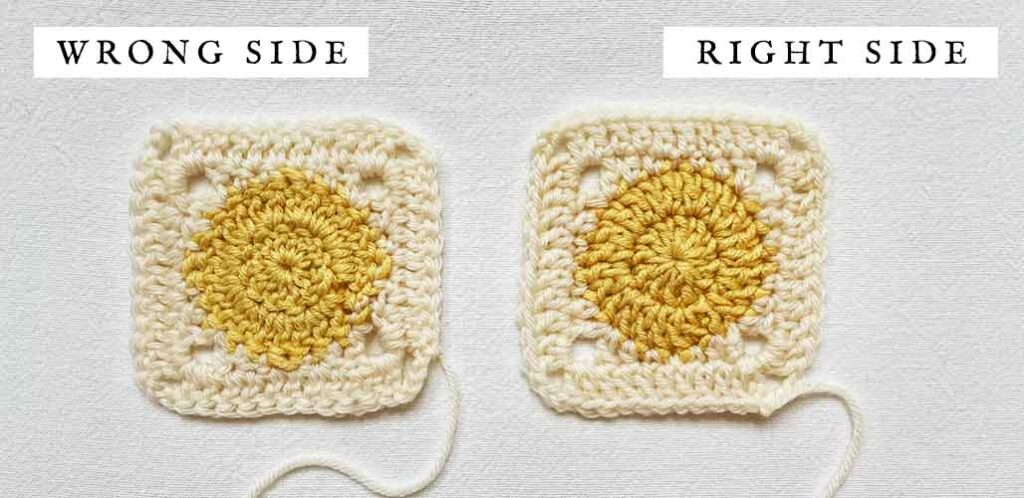
Can you see how the wrong side looks smoother, but not in a good way? When I assemble these squares, I’ll make sure they’re all the same way up, because it would look wrong to have some of them with their reverse facing up!
Right side vs wrong side in crochet – summary
The right side of your crochet is the side which will be seen by the world. Sometimes, such as when you’re working in the round, or making 3D stitches, it’s obvious which side is the front. But on other occasions, it won’t really matter. If you’ve ever had a bad experience realizing your work is the wrong way round, let us know in the comments down below!
